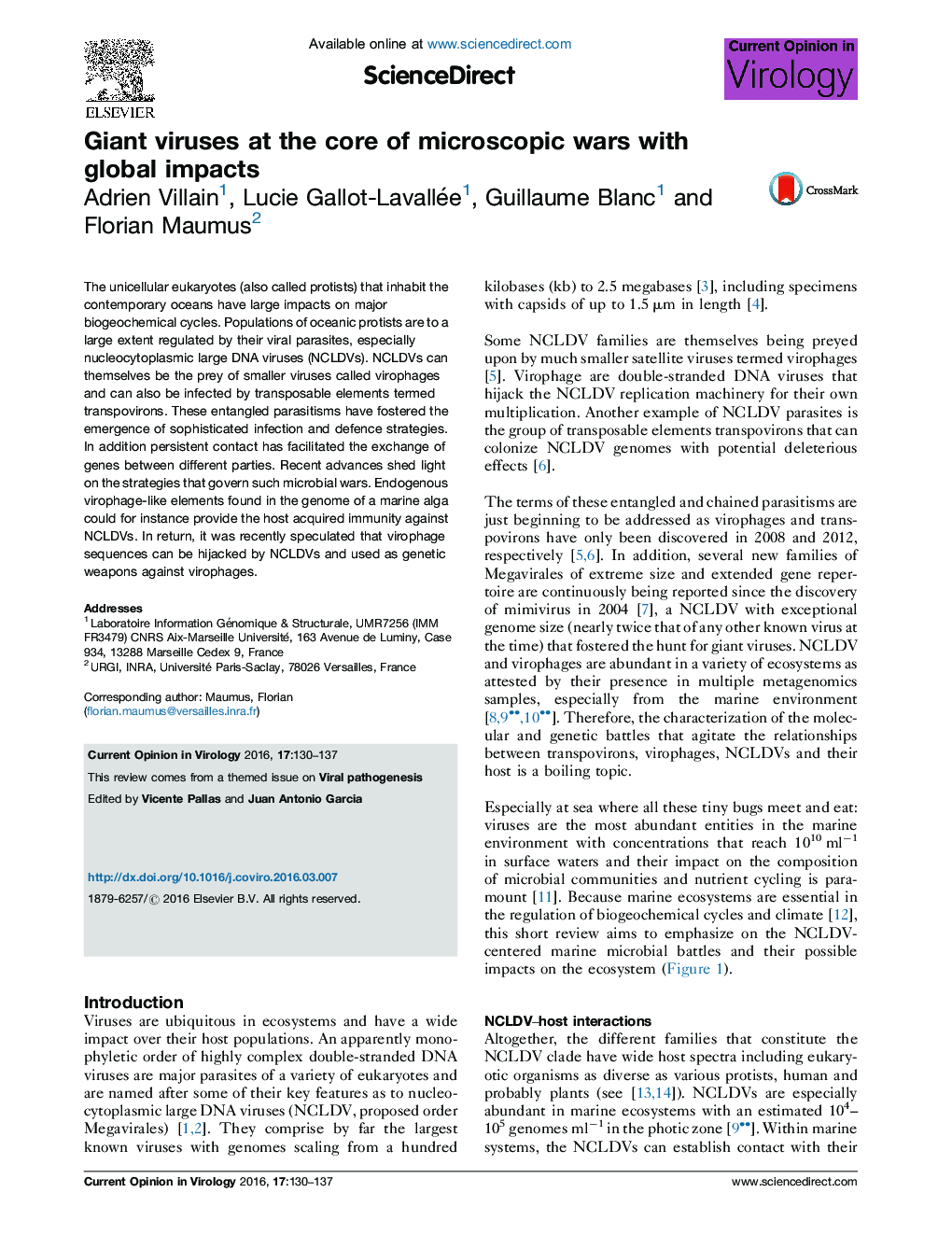| Article ID | Journal | Published Year | Pages | File Type |
|---|---|---|---|---|
| 5806610 | Current Opinion in Virology | 2016 | 8 Pages |
Abstract
The unicellular eukaryotes (also called protists) that inhabit the contemporary oceans have large impacts on major biogeochemical cycles. Populations of oceanic protists are to a large extent regulated by their viral parasites, especially nucleocytoplasmic large DNA viruses (NCLDVs). NCLDVs can themselves be the prey of smaller viruses called virophages and can also be infected by transposable elements termed transpovirons. These entangled parasitisms have fostered the emergence of sophisticated infection and defence strategies. In addition persistent contact has facilitated the exchange of genes between different parties. Recent advances shed light on the strategies that govern such microbial wars. Endogenous virophage-like elements found in the genome of a marine alga could for instance provide the host acquired immunity against NCLDVs. In return, it was recently speculated that virophage sequences can be hijacked by NCLDVs and used as genetic weapons against virophages.
Related Topics
Life Sciences
Immunology and Microbiology
Virology
Authors
Adrien Villain, Lucie Gallot-Lavallée, Guillaume Blanc, Florian Maumus,
